
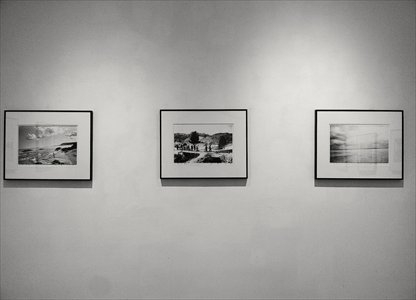 |
| Three works by Kitai Kazuo on exhibit at Acura Gallery in September 2012.(Photo/Courtesy of Acura Gallery) |
Undervalued art from Japan bears marks of regional rivalry
Headlined by their economic competition and territorial disputes now and then, the relationship between China and Japan often causes people to overlook other traditionally intertwined aspects, like culture and art. Yet, even though they bear much resemblance historically, the modern and contemporary art from the geographical neighbors has charted different courses under varying degrees of outside influence.
However, a similarly awkward situation facing both countries is their effort to gain Western recognition instead of each others' despite their ancient common roots. With all of their holding onto tradition and incorporation of Western techniques, the contemporary art of both countries actually has so much to learn from each other.
Undervalued photography
While political affairs remain chilly between the two countries, warmer communication is still going on within the art circle, though it too is being somewhat affected.
"There of course has been some influence spread to the art exchanges since (the territory disputes escalated in September) last year, with some possible cancellations among artists planning to exhibit in each other's country," said Xu Jiong, manager of Aura Gallery in Beijing, which occasionally exhibits Japanese artists' works.
Now, an exhibition of work by veteran Japanese photographer Suda Issei called Monogatari of Pine is being held in Aura. It began on March 16 and runs until the 15th of this month. Issei is the fourth Japanese photographer the gallery has exhibited since April 2012.
"There are many visitors, but the prices are low even compared to young Chinese artists," Xu introduced, "like the works of Araki Nobuyoshi, which we exhibited last year, the prices were around 35,000 yuan ($5,630)." And Suda Issei's works are also between 10,000 and 20,000 yuan in China.
And Hiroshi Sugimoto, the most valued Japanese photographer whose works are priced at over $1 million per copy, still has a limited reputation in China with few collectors. Actually, the fact that such veteran Japanese photographers' works are undervalued in China is the antithesis of how Japan's other art like paintings, sculptures, dolls and costume designs are accepted in the country.
Mutual disregard
Maybe for photographic works, Chinese collectors are still at an early stage of appreciation compared to their Japanese counterparts due to that country's advanced photographing technology attained decades ago. Even works by the country's top artists including Murakami Takashi, Yayoi Kusama and Nara Yoshitomo fail to find appropriate prices and collectors in China.
At Christie's spring auction in 2011, when the overall art market was gloomy, Yellow in Blue, a 1994 oil painting by Nara Yoshitomo, sold for $1.4 million, setting a record high for his works. And on April 5, Sotheby's in Hong Kong will kick off its first special auction of Nara's works. It will be the first global special auction for the artist.
Some Japanese contemporary art has attracted attention in China. According to Zhao Xiaoxuan, a researcher of the art industry, "it's mostly the derived products that are 'kawaii' or cute works by those artists that attract people in fashion or entertainment circles."
Chinese contemporary artists, however, encounter difficulties in attracting collectors in Japan, despite their envious prices within the country and in some southeastern Asian countries.
"Few Chinese contemporary artists would choose Japan as their target destination for exhibitions," said Xu. "For Chinese art, most Japanese collectors are still focusing on traditional paintings and calligraphies. They are not very interested in [China's] contemporary art," Xu told the Global Times.
In fact art exchange has not been as flourishing as it was before the two countries established official ties in 1972. In recent years, with the exception of calligraphy, few other types of contemporary art can find common ground in the two countries.
Western impact
"An awkward phenomenon is that artists in both countries are turning to the West for recognition," said Xu. Influenced by modern Western art at different paces and in varying degrees, contemporary art in the two places both feature a combination of traditional and modern characteristics.
From the perspective of international recognition, it seems that Chinese contemporary artists have proportionately more to learn from their Japanese peers. In 2007, My Lonesome Cowboy, a sculpture by Murakami Takashi, auctioned for $15.16 million in New York - a sky-high price for contemporary art. By contrast, the highest record for Chinese contemporary art work is from Zhang Xiaogang whose 1988 triptych oil painting Forever Lasting Love sold for $10.1 million in 2011.
And beyond the auction market, Japanese contemporary artists have approached other areas by virtue of their artistic achievements. Both Murakami Takashi and Yayoi Kusamawith world famous luxury brand Louis Vuitton to design their bags, costumes, jewelry and other products.
Polka dots are featured in many works by Yayoi Kusama, whether in her paintings, sculptures or installations. Her style has deeply affected the fashion trend in Japan, with polka dots becoming a very popular element in young Japanese women's clothing.
"As signature figures of Japanese contemporary art, Yayoi Kusama, Murakami Takashi and Nara Yoshitomo have underscored the country's art development under the influence of Western culture," said Zhao.
Since the 1950s, after experiencing failed wars, accelerated post-war growth and finally an economic slump for the past decade, Japanese artists employed art as a way to reflect their views toward life, death and values. "Works of Yayoi Kusama are like a taunt to a vane and disastrous society," said Yang Kai, CEO of 99ys.com, an information website covering the art industry in China.
"Those images of 'evil' little girls in Nara Yoshitomo's works actually represent people's living situation in the 21st century," said Zhao.
And though widely open to Western influence, Japanese artists maintain their traditional elements. Its "land art" movement, in which landscape and the work of art are inextricably linked, even influenced Western art.
The pioneer of land art, Sekine Nobuo regards this art as a combination of his traditional thoughts with Western influence. "I was deeply inspired by those poems of Li Bai (a famous Chinese poet of Tang Dynasty (618-907)), my land art have elements of Taoism, as well as American artistic ideas," he said.
Compared to Japanese contemporary art, Chinese parallels seem to be at a loss. "Young artists have the tendency of completely copying the Western style," said Xu, "We should first stick to our traditional art, the emergence of new ink painting is an encouraging phenomenon, but more should be expected."



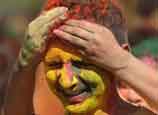
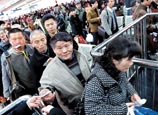
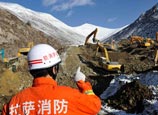

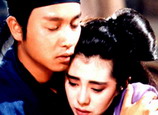









 Gangs smuggling case involving refined oil seized in China's Zhejiang
Gangs smuggling case involving refined oil seized in China's Zhejiang


![]()
